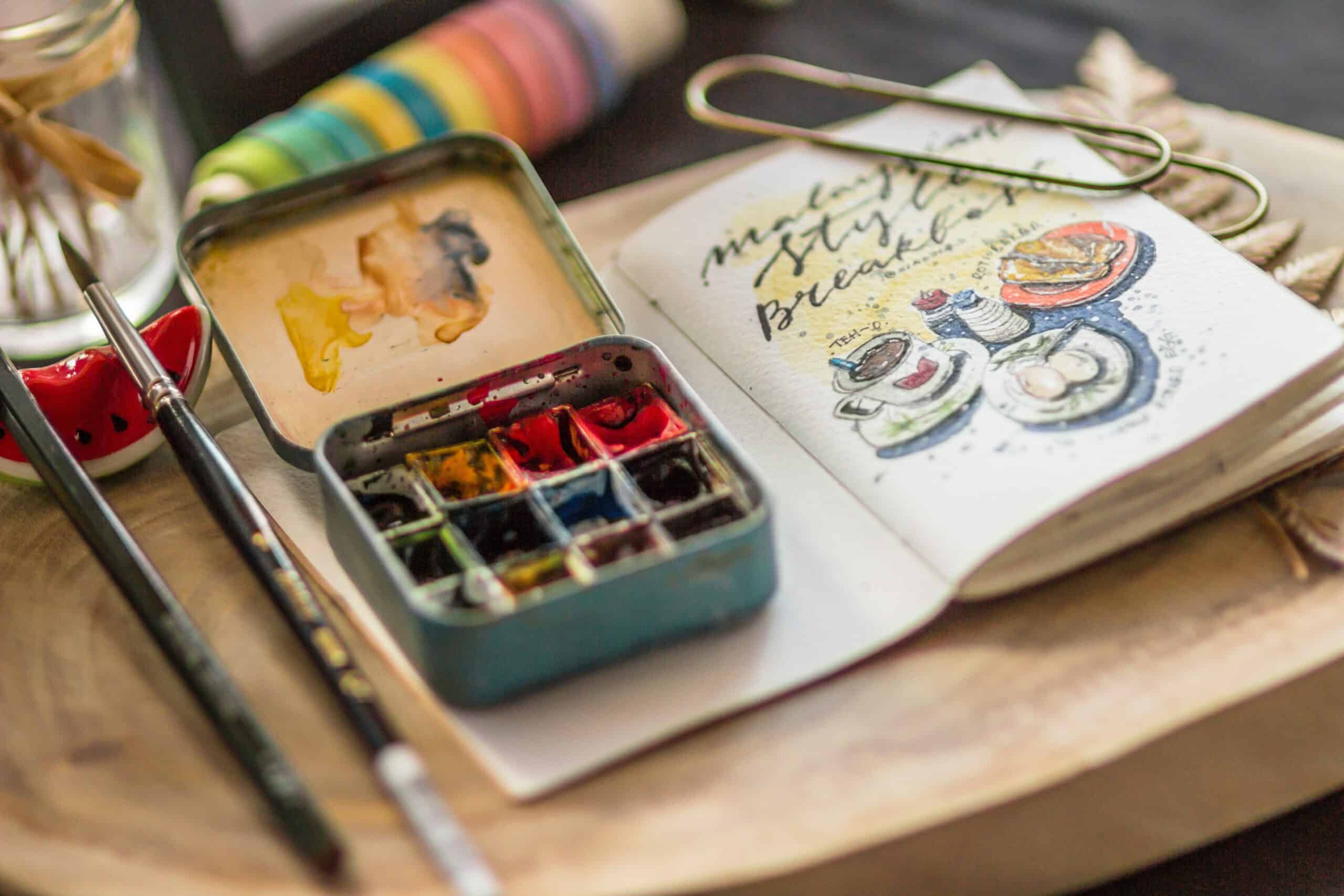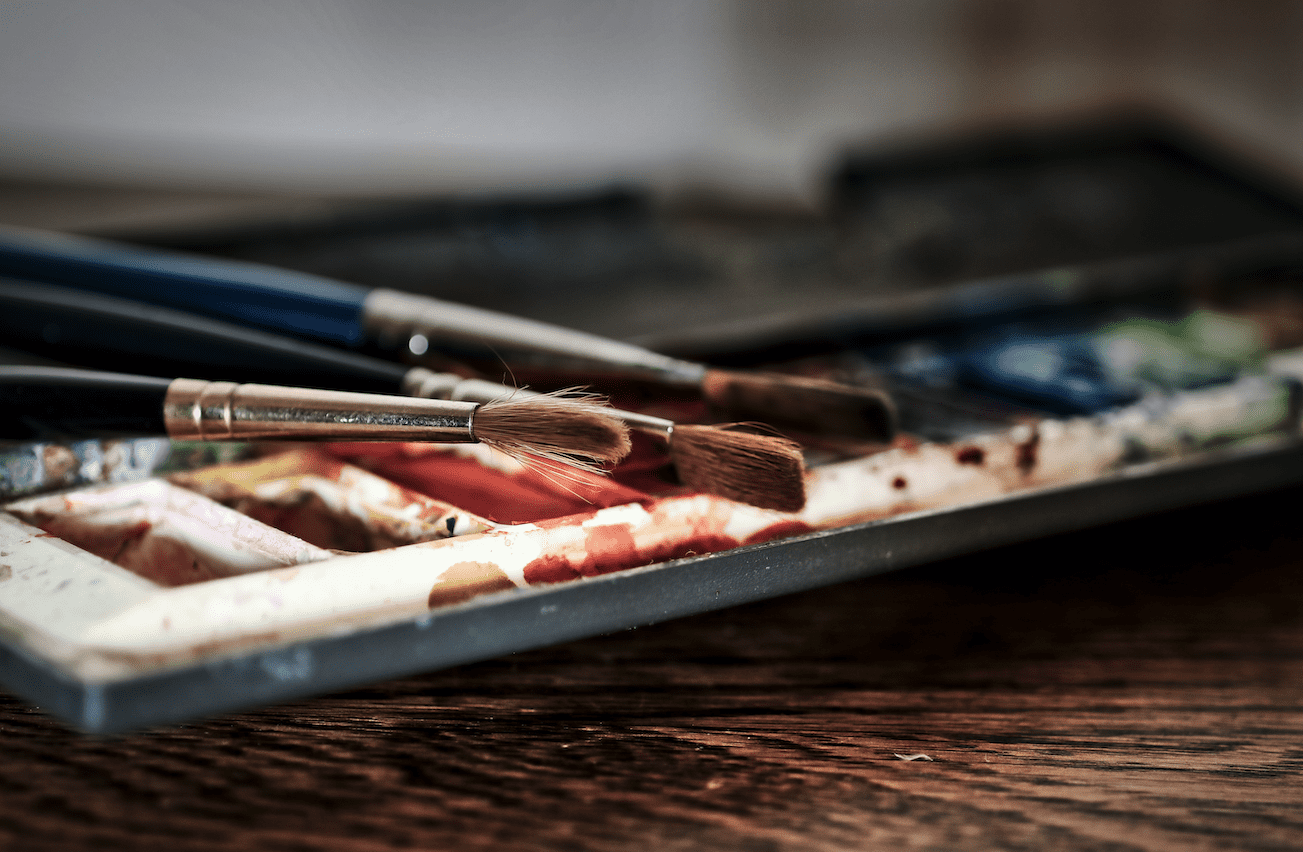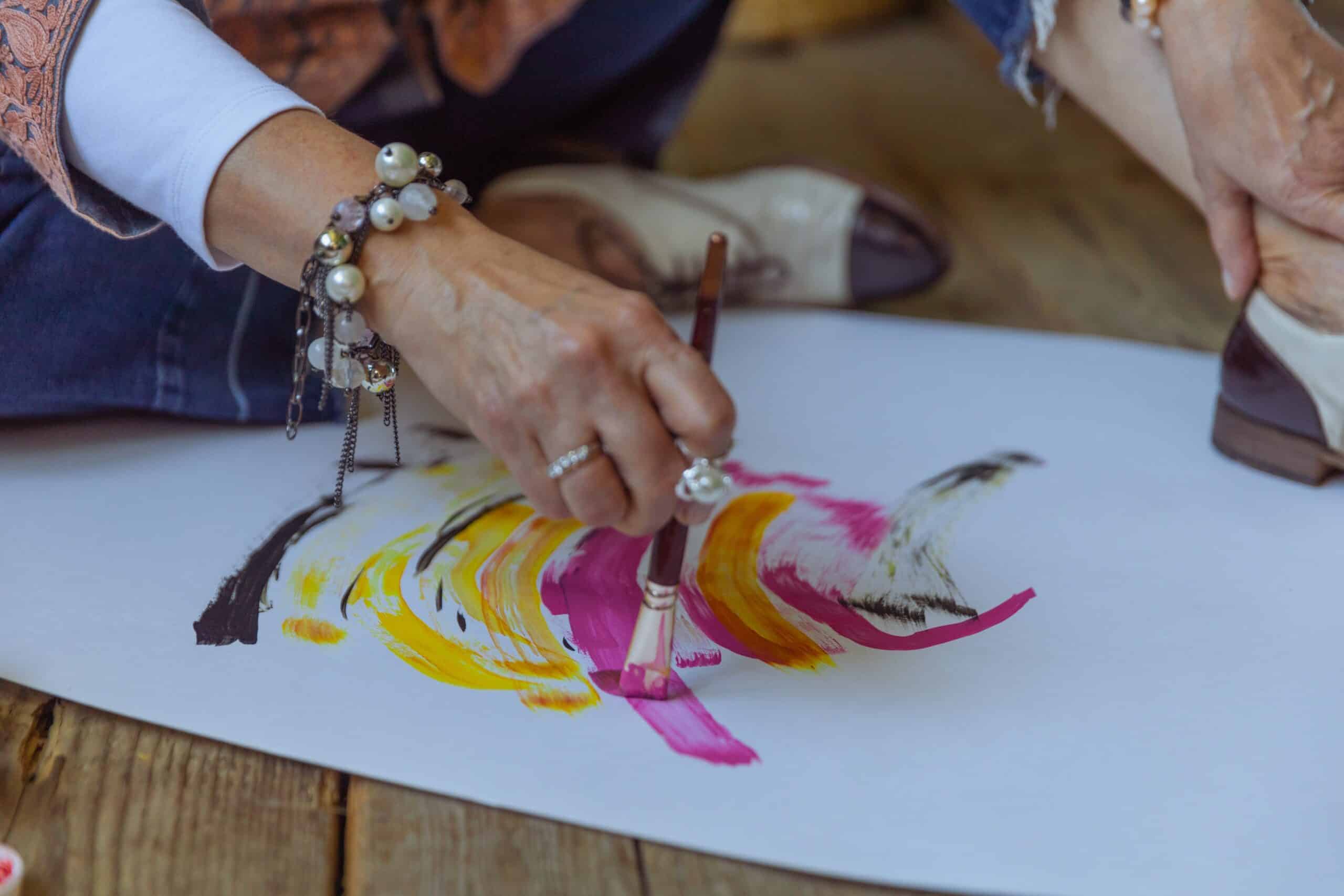How To Flatten A Watercolor Painting
Are you a budding watercolor artist looking for tips on how to flatten your painting? If so, look no further! In this article, I'm going to share my top recommendations for flattening any watercolor painting. By the end of the article, you'll have all the knowledge and tools necessary to get it done right.
The process of flattening a watercolor painting can be daunting at first – but with some patience and practice, it's not that hard. It just takes a little bit of know-how and guidance from someone who's been there before. That's why I've put together this comprehensive guide that covers everything from choosing the right materials to executing each step in the process.
So what are you waiting for? Let's jump into it and learn how to properly flatten our watercolors! With this information under your belt, you'll be able to create beautiful works of art that will last through time.
Gather Materials
You might be wondering why you would ever want to flatten a watercolor painting. Flatening can help preserve a work of art, and give it an even finish across the whole surface. So let's get started!
Gathering materials is the first step in flattening your watercolor painting. The most important item will be some kind of absorbent material such as blotting paper or newsprint that is larger than the artwork itself. You'll also need waxed paper, masking tape, book weights (or heavy coins), and access to iron for pressing.
It's best to have all these items before starting so you don't run into any problems along the way. With this simple list of materials at hand, you're ready to move on to prepping the painting surface and begin flattening your watercolor masterpiece!

Prepare The Painting Surface
Flattening a watercolor painting can be thought of as the foundation for creating your masterpiece. It's like building a skyscraper- it's necessary to have a solid base before you even consider the design and colors. With that in mind, let’s dive into preparing the painting surface:
The preparation process is all about laying down an appropriate foundation for our artwork – something sturdy and reliable on which we can rely. This is done by first cleaning off any debris or oils from the canvas with a damp cloth. We then need to apply a layer of gesso - think of it as liquid plaster - to:
- Create an even surface
- Increase paint adhesion
- Reduce absorption of moisture from watercolors
- Block out underdrawings (if present)
These steps are essential for getting just the right texture and finish before adding layers of color. Once everything has been applied evenly, let each step completely dry before moving on to the next one. Taking time here will pay dividends when we get around to coloring our work; allowing us to create beautiful images without worrying about bumps or unevenness showing through! With this strong base now set, we're ready to move onto applying our first layer of watercolor...
Apply A Layer Of Gesso

Applying a layer of gesso is like laying down the groundwork for your painting. It's an essential step that requires patience and precision. Just like any other construction, it needs to be done correctly for everything else to fall into place.
Gesso works as both a primer and sealant; when you apply it to the watercolor paper, it will prevent the paint from bleeding through while also providing a smooth surface on which to work. Start by dabbing small amounts of gesso with a wide brush or roller, lightly coating the entire area. Make sure each stroke overlaps slightly - this will help create even coverage and protect against any unpainted patches showing through. Continue until all areas are uniformly covered but don't overdo it - too much of anything can ruin the effect!
With your base layer complete, allow the gesso to dry thoroughly before continuing with the next step. This may take some time depending on how thickly you applied it so make sure you give yourself plenty of space for drying. The hard part is already out of the way now - just one more hurdle until you reach your goal!
Allow The Gesso To Dry
Once the gesso is applied, I need to allow it to dry. This step can be time-consuming, so it's important to be patient and let the gesso thoroughly dry before moving on to the next step.
The drying process depends on a few factors such as humidity in the room and how thickly you've applied the gesso.
If you're able to measure relative humidity with an instrument like a hygrometer, that'll give you a good indication of when your painting is ready for the next step.
Otherwise, simply leave it out overnight and check back in the morning - if there are no wet spots left, then it's likely to dry enough!
It may seem tedious but this crucial step helps ensure everything else goes smoothly, so taking some extra care here will save me from frustration down the line. Now that my gesso layer has been allowed to fully dry, I'm ready to move on to applying gel medium!
Apply A Layer Of Gel Medium
So, now that the gesso is dry, it's time to apply a layer of gel medium. Gel medium has many uses in painting and mixed media art. It adds texture and depth to your pieces while also allowing you to make subtle changes or corrections if needed. In this step, you'll be using the gel medium as an adhesive for your watercolor painting paper.
Start by spreading a thin layer over the surface with a brush or palette knife. Be sure not to leave any gaps since this will prevent the paper from adhering properly. If there are any lumps or bumps, smooth them out at this stage – they can be difficult to remove later on! Once you're satisfied with the layer of gel medium, carefully place your watercolor paper onto the canvas board and press down firmly.

You mustn't move around too much once everything is in position; otherwise, it may cause air pockets or wrinkles. When all of the edges have been secured and everything looks good, let it sit for about 15 minutes before proceeding to the next step.
Allow The Gel Medium To Dry
So, you've applied the gel medium - now what? You may be wondering how to finish the process of flattening your watercolor painting. Well, after you have applied a layer of gel medium, it's time for the next step: allowing it to dry!
The drying time between each application is crucial and will determine the overall outcome of your work. The more layers you apply, the longer the wait before applying pressure to flatten out your artwork.
You must follow all directions on the product label regarding drying times for this technique to be successful.
Once the gel has dried completely, it’s time to move on to the final step in creating an even surface for your masterpiece – applying pressure to flatten out your painting. This can be done with books or other heavy objects such as bricks or stones depending on their size and weight. But remember not to use too much pressure as this could cause damage to both sides of your artwork!
Apply Pressure To Flatten The Painting
Now that the gel medium has had a chance to dry, it's time to move on to the next step: applying pressure. This is an important part of flattening out your watercolor painting and will help make sure all parts are perfectly flat in the end.
The best way to apply pressure is by using something like a clean book or some other heavy object with a flat surface. Place this object on top of your painting, making sure not to place too much weight down at once - you don't want any parts of the paper warping from too much pressure! Leave it for 24 hours and check for progress - if necessary, add more weights until you're happy with how flat it is.
Once everything looks good, remove the weights carefully and take a look at your flattened watercolor painting! You can now frame it or mount it however you like without worrying about creases or bumps spoiling its appearance. All that's left now is to admire your work!
Frequently Asked Questions
Flattening a watercolor painting can feel like an uphill battle – but it doesn’t have to be. Knowing when the painting is completely flattened isn’t as tricky as you might think. It’s sort of like baking a cake: once the oven timer goes off, you know your masterpiece is ready for consumption!
Several signs will tell you if your painting has been adequately flattened. Here’s what to look out for: – A distinct lack of bubbling or curling in the paper – No raised edges on the sheet of paper – An even consistency throughout the image – The surface should appear smooth and glossy after application of gel medium or gesso
Getting to this point requires some trial and error on your part; however, with patience and practice, flattening a watercolor painting will become second nature. Allowing proper drying time between each step can help ensure success. Start by following directions carefully and don’t forget to take notes along the way so that you can refer back during future attempts. With enough experience under your belt, you’ll be able to recognize when your work is finished without having to double-check every time!
When it comes to flattening a watercolor painting, understanding the best process is key. The use of gel medium and gesso in combination can help achieve this goal. However, the timing between these two applications is crucial for success. It’s important to understand how long you should wait before applying the second layer of product.
Getting it right requires research and knowledge – but thankfully there are plenty of resources available to guide us through this step. Alliteration aside here’s what we need to consider when waiting between gesso and gel medium: * Temperature – if your environment is too hot or cold, drying times will be affected * Humidity – dry rooms generally take longer than humid ones * Airflow- make sure the area is well ventilated during the application process * Gesso thickness- thicker layers require more time to dry * Gel Medium type – some types may have different instructions on drying time
Taking all of this into account will ensure that both products adhere correctly and create a long-lasting finish. Knowing which factors affect drying times helps us get our desired results without any surprises along the way. So whether you’re an amateur artist or professional painter, having this knowledge at hand can save precious time and energy as you work towards perfecting your craft!
I’m sure we’ve all had that moment when you finish your beautiful watercolor painting, just to find it still looks a bit flat. This can be heartbreaking! To help give your artwork some added dimension and life, I recommend adding a gel medium. But before you start, there’s an important step of waiting for the gesso to dry completely.
The next question then becomes: How long should I wait for the gel medium to dry? The answer is simple – patience is key! Applying too much or not allowing enough time for it to set will only result in a crinkled mess. So take your time with this crucial part of the process; let each layer properly bind together so that your piece stands proud on its own merits.
It may feel like forever while you’re waiting but don’t worry; once everything has dried, you’ll have achieved the perfect balance between vibrancy and texture, giving your work the stunning look it deserves. Allowing yourself the extra few minutes here makes all the difference in creating something truly special.
It’s a daunting task to tackle flattening a watercolor painting – it can feel like the odds are stacked against you! But don’t despair just yet, as there might be an alternative solution. Is there another option beyond using gesso and gel medium?
The answer is yes. You could try some of the other methods available for flattening your work such as acrylic matte medium, Golden Soft Gel Gloss, or even Marshmallow Fluff (yes, really!). These products each have their unique properties and they all offer different degrees of flexibility when used with watercolors. It’s worth experimenting to find out what works best for your particular situation.
When looking into these alternatives, always remember that if you’re not sure how long something will take to dry then it’s better to err on the side of caution and give it more time than necessary before moving on to the next step. That way you won’t risk ruining your work due to impatience! With careful consideration and experimentation, you should be able to successfully find a method that works well for flattening your watercolor painting without having to resort to gesso and gel medium.
The idea of flattening a watercolor painting can be likened to trying to contain the power of an ocean wave; it’s not easy, and often feels like a lost cause. But with determination, patience, and the right materials, even something seemingly impossible can become possible.
When tackling this problem, one critical step is knowing which type of gel medium to use to get the desired result. If you choose too strong or too weak a product for your particular project, you’ll find yourself back at square one – so attention must be paid!
In this instance, I would recommend using a light gel medium that won’t overpower the colors in your work but will still provide enough adhesion between layers without affecting their vibrancy or texture. With some trial and error, eventually, you’ll discover what works best for your specific needs – then you can sit back and admire your flattened masterpiece!
Conclusion
When it comes to flattening a watercolor painting, many steps must be taken. From choosing the right type of gel medium to allowing enough time for drying between each step, the entire process can seem overwhelming. But with some patience and knowledge of the technique, you can achieve amazing results!
I know firsthand how rewarding this process can be I recently flattened one of my own paintings using gesso and gel medium and was pleased with the result. It felt like a coincidence when I finished because not only did the once wrinkled paper become smooth, but also the colors in my painting became more prosperous and more vibrant. Seeing my work now completely flat on canvas was truly satisfying.
Flattening your watercolor painting may take some effort on your part, but it’s worth it when you get to see your artwork come alive before your eyes. With these tips, hopefully, you’ll find success in achieving beautiful results just as I have. Good luck!






